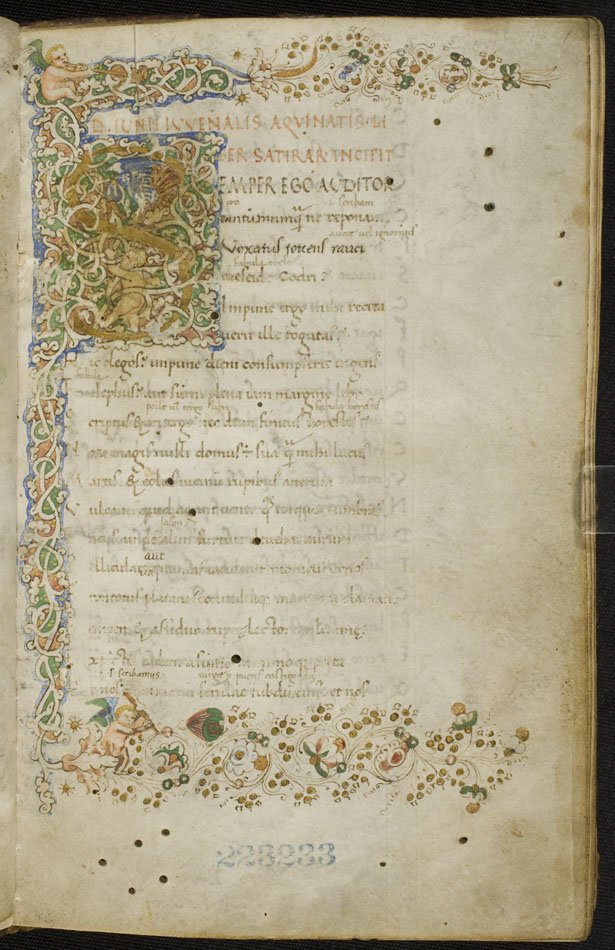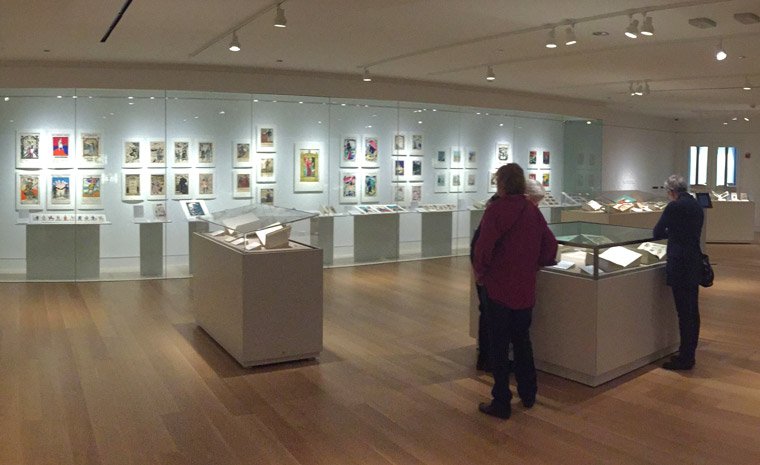Music in the Margins
At the University of Chicago music provides an important release from silent study. There are seven a cappella groups, the Marching Maroons pep band, the Symphony Orchestra, numerous ensembles, and the Guild of Student Carillonneurs who perform the bells at the Rockefeller Memorial Chapel for all of campus to hear–not to mention the musical antics that take place on campus, from flash mobs to impromptu guitar performances. The students’ notorious monkish devotion to study is complemented by boisterous social life.

Armenia, ca. 15-16th century
Paper
MS 139, ff. 150v-151r
This Armenian manuscript in the bologir (rounded letters) script is richly illuminated in a regional style of the fifteenth or sixteenth century. The manuscript has been cut and rebound, damaging some of the original illuminations, but the eponymous fluting shepherd survives in the left-hand margin of the page shown here. Wearing regional costume, the shepherd plays a small flute.
Juvenal
Florence, Italy, 1441 CE
Parchment
MS 29, f. 1r
This 1441 manuscript is a Florentine humanist edition of Juvenal’s Satirae, a second-century CE Roman text. The Satirae can be read both as a polemic condemning classical Roman excess and a comedy playing off it. The marginal emendations reflect this dual status. Although today we view the humanist project of “recovering” classical antiquity in the Italian Renaissance with a serious eye, the mischievous putti (small cherubic nudes) on the opening page reveal a humorous bent. On the top of the page a putto plays a horn, while two others inhabit the illuminated capital letter and bottom margin. The manuscript has marginal notes in the same hand as its text, and a stamped leather cover that is original to the volume, rendering it not only beautiful, but also an important exemplar of boundaries, marginal spaces, and text coming together as a synthetic whole in the intellectual culture of fifteenth century Italy.

Geert Groote (1340-1384)
Dutch, ca. 1480
Ms. 347, ff. 47v-48
When absurd figures, anthropomorphized animals, and monstruous grotesques populate the borders of illuminated prayer books, they create a stark contrast to the devotional pictorial and textual content. Here in the lower right corner, an ape is crouching along the border as an apewomanis artistically balancing on his back – a pun on a popular story of Phyllis riding the lovestricken Aristotle through the courtly palace. In the top right corner an extravagantly dressed figure carries a bucket with a monkey playing the bagpipe while a white hare with electrified ears seems to glare at the crucifixion of Christ on the facing page.

Blasius de Parma
Italy, ca. 15th century
MS 10, ff. 16v- 17r
This fifteenth-century Italian manuscript is a neo-Platonic critique of Aristotle’s Meteorologica by Biagio Pelacani da Parma, and this section of the text refers to bell towers in the city. The typical nota bene hand here is equipped with a bell, suggesting the sounds of the ringing bells from the campanile and providing a sly contrast to the seriousness of the text.


